Mt Korong Eco-Watch group members Kate Lee and Freya Mathews joined us at our Bunjils Shelter annual gathering in Nov 2024, starting a conversation about the similarities and differences between our groups, and granite landscapes. In the interests of a loose confederation of granite country conservation, Mt Korong Eco-Watch invite BRLMG members for a day of walking and talking at Mt Korong. We’ll start with morning tea and conversation at 'Burrabungle', followed by a walk on Mt Korong, then a provided lunch. Camping options are offered for the Saturday night of the 6th, and a bedroom is offered in a house also. Black Range to Glenalbyn (Mt Korong) is approx 1hr 45mins drive. More details will be shared in August. To assist planning, please RSVP with your interest.
As someone reasonably new to the Range and its flora, I’ve been watching several plants which are appearing much later than usual due to the drought. Some emerged in autumn, then dried out and disappeared, and have started to regrow after the recent Chunnup rains. I’ve focused on three very different small-scale ground cover plants that I find among the moss and lichens on the eastern side of the range.
Twining Fringe Lily (Thysanotus patersonii) appears as tiny green threads that emerge annually from the tuber. The stems twirl and extend to twine around a twig or crawl across the ground. The stems and leaves are barely visible, at least until their lilac flowers appear in Spring.
On a tiny scale, the tubers resemble those of its botanical cousin, the South African plant, Bridal creeper (Asparagus asparagoides) whose tubers can extend to form thick mats. See weed watch below...
Rock Fern (Cheilanthes austrotenuifolia) appeared after the light autumnal rain then disappeared with the dryness, and has now reappeared as tiny tender fronds with myriad indentations.
Another plant that is dormant in summer is Common Raspwort (Gonocarpus tetragynus) whose rough four-sided stem gives the reason for its name. On our patch, there are lots of small shoots emerging again after recent rain, and you can still spot last year’s dry flower stalks.
Bridal creeper (Asparagus asparagoides), that much larger relative of the Twining Fringe Lily extends its tubers into strong mats as its enthusiastic green shoots emerge with autumn rains, later flowering and fruiting with red berries that are dispersed by birds. It’s a satisfying task to dig up those mats of dark and dried tubers or find the fresh ones and tiny shoots, or otherwise attend to them when you see their shoots appear and rapidly grow to wind over logs, reeds and branches .
With nature in mind,
Tanya Coburn

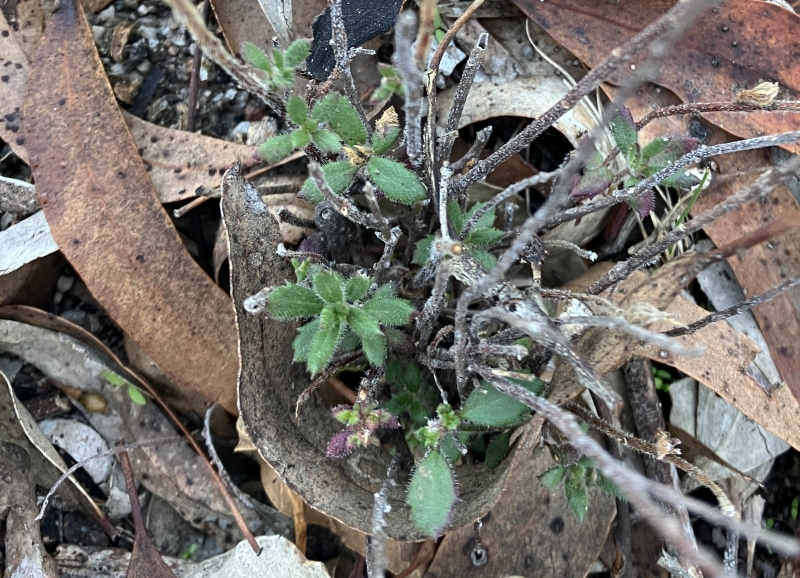
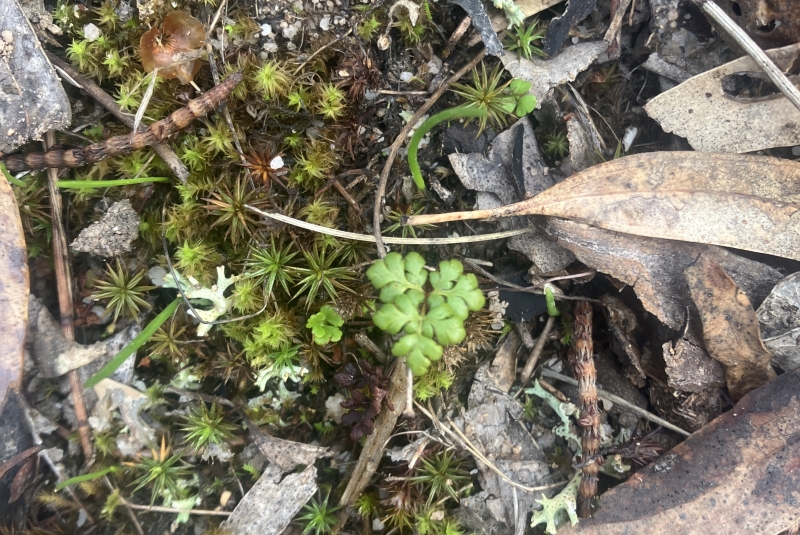
We would love to have you involved in the Black Range in 2025/2026. Please complete the Membership form here and pay your membership fee and we'll look forward to seeing you at an activity this year.
Now that we have finally received some rain, you may be wondering when to plant this year’s revegetation stock from the Black Range LMG. planting locally sourced indigenous plants is a benefit to us as landholders and to the soil, flora and fauna of the range.
As our ‘autumn break’ became a ‘winter break’, we have missed the optimal growth time when the soil is still warm. However we have had some recent rain and more is promised.
What are our options?
Plant during winter and mulch deeply with at least 10cm of mulch, and hope that we continue to have some decent rainfall.
Plant and mulch somewhere where you can provide occasional water.
Wait for next season.
This year’s revegetation stock is being cared for while we wait for the right conditions at Dalki Garringa nursery in Wail. We will be in touch when our resident botanical experts (Wendy and Neil Marriott) advise us that it's a good time to plant. Survival through dry periods on our dry granitic soil is challenging. Tanya Coburn reports that of the dozens of plants planted on their landholding two years ago, only two sheoaks and a hakea have survived.
We also have sent seed to Dalki Garringa for the next round of revegetation stock.
The Landmate crew from Ararat prison completed Gorse control around the Black Range during May. Control focused on the biodiversity protection and restoration of riparian areas.
During June 2025 Black Range landholders will be using the free services of the Prison Landmate crew to undertake rabbit warren fumigation. This is an opportunity to minimise the annual grazing impact of rabbits on biodiversity, revegetation, pasture and sheet erosion. It takes less than one rabbit per hectare to prevent the successful regeneration of many of our common native trees and shrubs.
The Landmate crew will also work on Boneseed, Bridal Creeper, Cape Tulip and soil erosion control over the next few months in the Black Range.
The Landmate Program has been a valued partner and made a significant contribution to environmental conservation in the Black Range over the last 35 years.
In the recent Gwangal moronn autumn season, the third annual cycle of cool Cultural burning was completed in Black Range. Led by the fire ranger team of Barenji Gadjin Land Council, this year it was fabulous to also be joined by a team from Eastern Marr Aboriginal Corporation. The walpa took place on two sites of approx. half a hectare each on different private landholdings: an area of grassy woodland, and of sedge woodland. Our Reading Fire Country event walked interested BRLMG members through one of the walpa sites, and discussed some recent writings on fire use in land management, and increasing frequency and intensity of wildfire. We hope to expand the program to a third site next year, as we all learn about the response of native and introduced species to walpa.
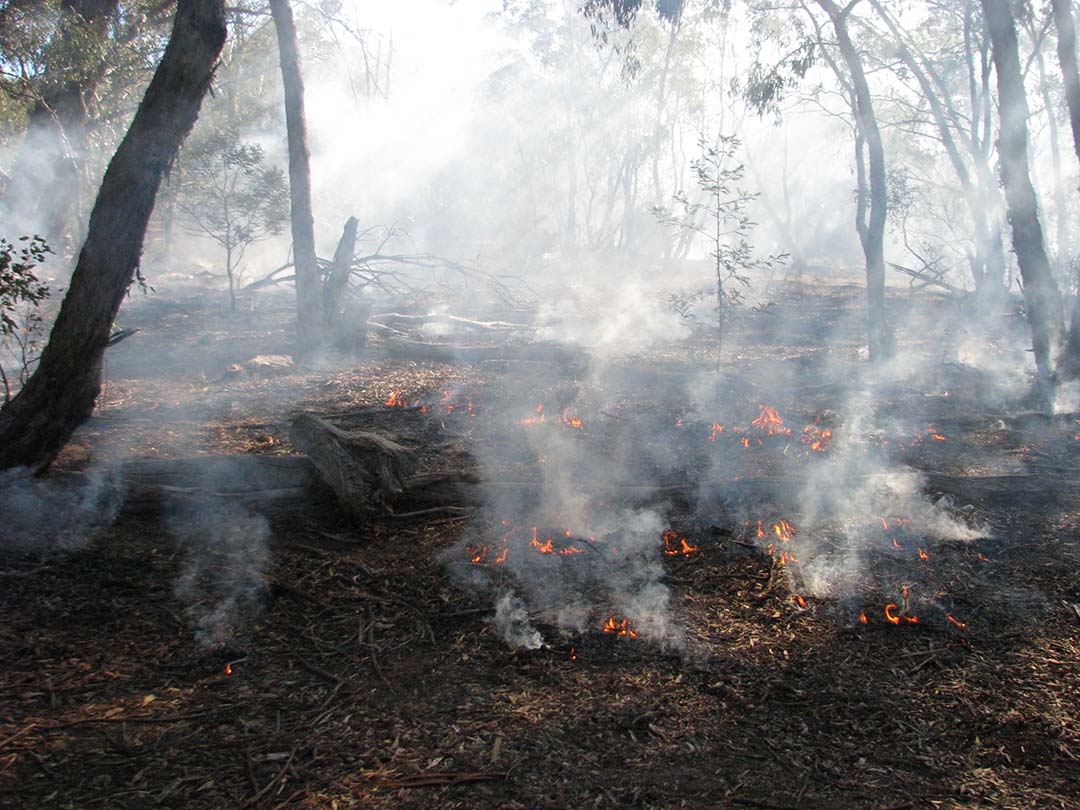
Greg Burgess and Tanya Coburn are grateful to all the enthusiastic and experienced wire twitchers, strainers and staplers, post diggers, and assemblers for the exclosure building at our place on the western side of the range, followed by a late morning tea and a walk in the reserve above our place to look out towards Gariwerd. We have now planted out last year's revegetation tube stock into the exclosure.
If you are keen to host an exclosure on your site you can request a working bee or build it yourself, or alternatively request the LandMate crew to erect one, contact the secretary or complete the section in the 2025/2026 membership form.
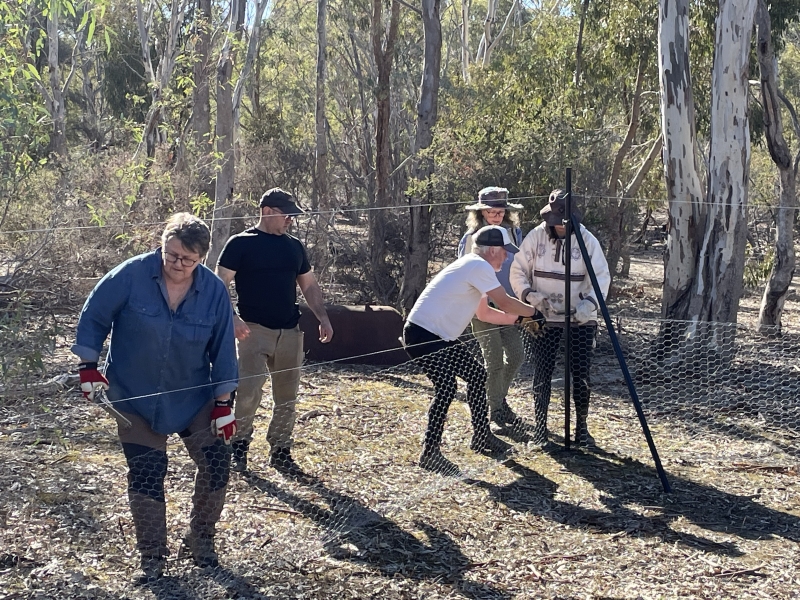
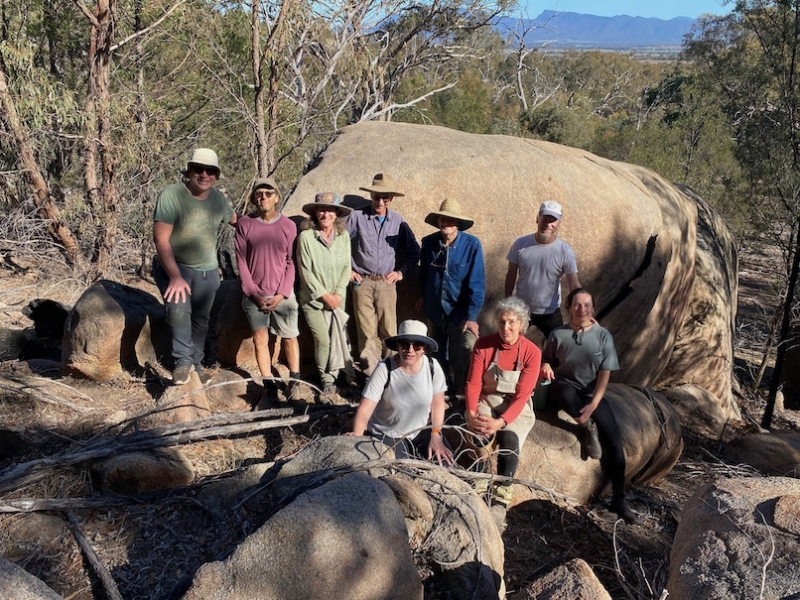
BRLMG co-founding member Elwyn Dennis argues that efforts to reverse environmental degradation are not working adequately, and that we need tools for effective eradication of invasive species, particularly the use of robotics for doing the ranger work that humans seem to be presently unable to do. Elwyn tells a story of why we need a different approach, and speculates on what a RoboRangeR might be. It's a good provocative read in the Landholder Forum.